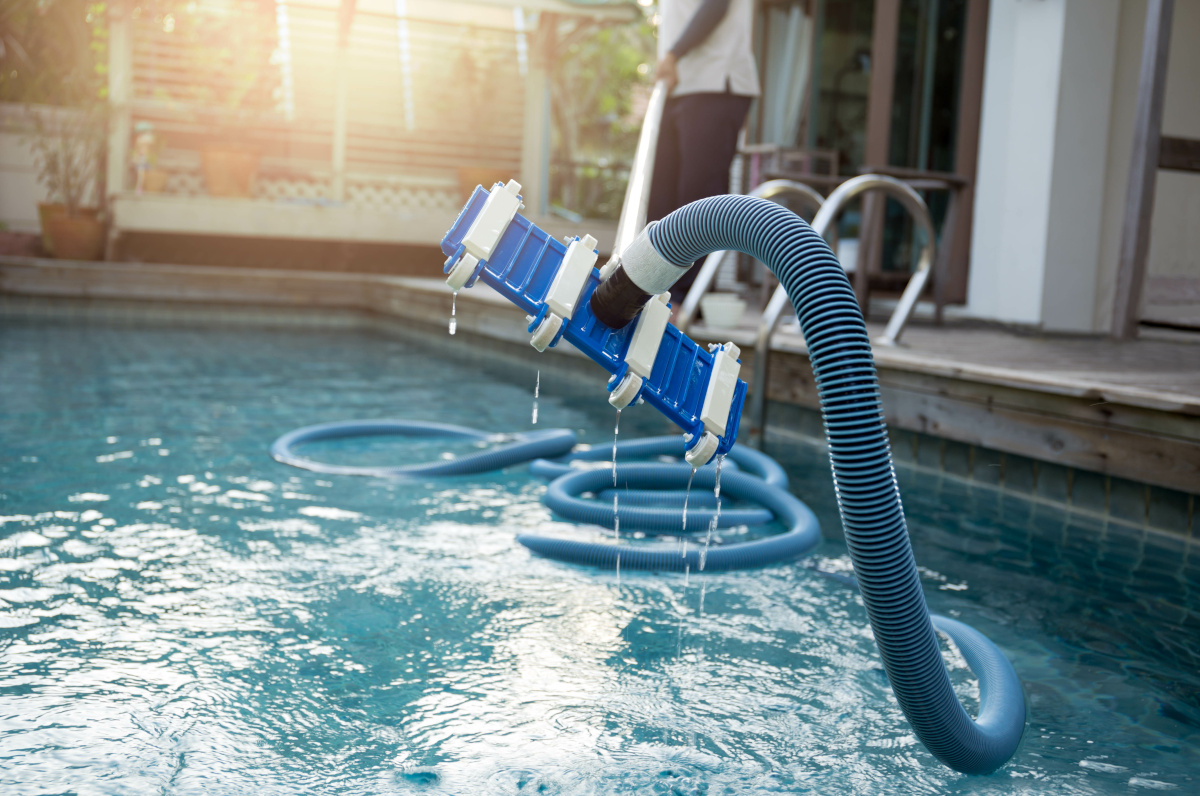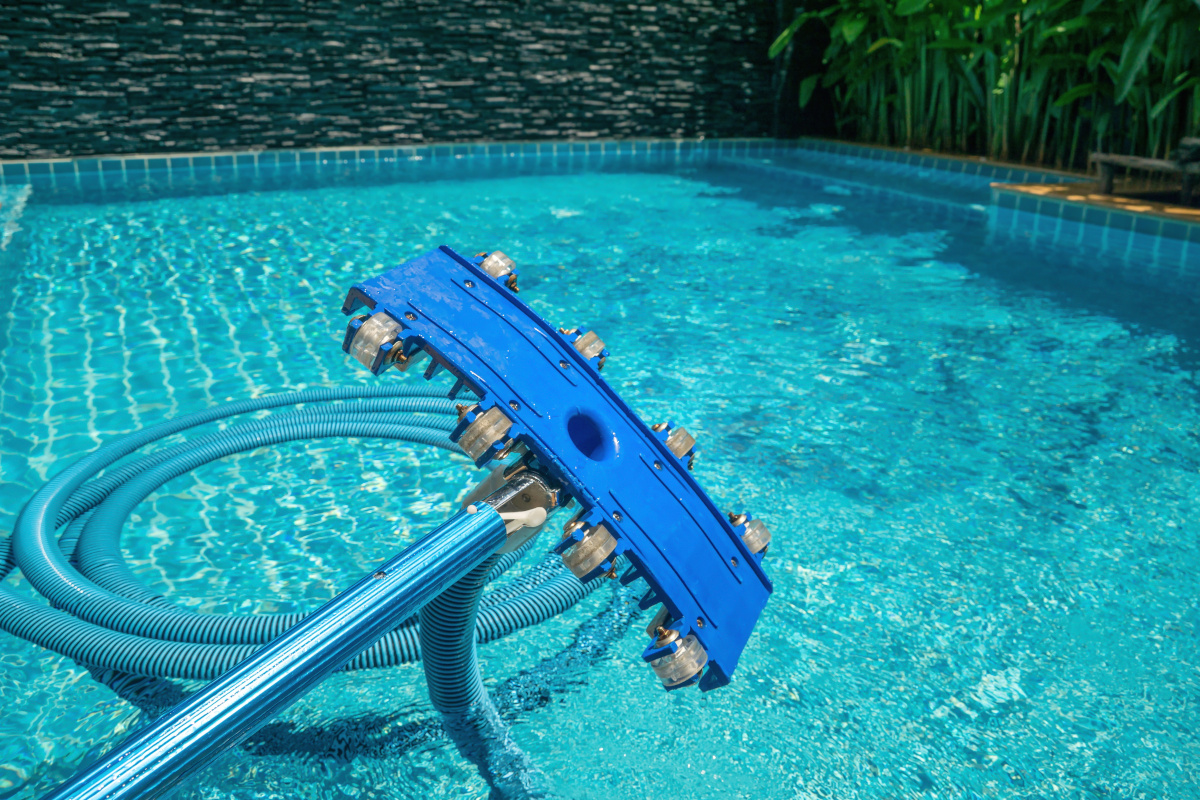
What is a self-cleaning pool system and should you get one?
Honestly, everyone would love to have a pool in their garden, but the idea of cleaning the pool isn't much fun. Some homeowners already have a beautiful pool, but barely use it because the effort required to keep it sparkling is so time-consuming. That's why you should consider a self-cleaning pool system.
This system keeps your hands free and your pool in perfect condition. Your pool will always stay clean without any effort on your part. Here's all you need to know about automatic cleaning systems.
What is a self-cleaning pool system?
A self-cleaning pool system is a cleaning technology that automatically removes debris and dirt from a pool.. It's also known as a floor cleaning system or intelligent pool. It uses cleaning heads strategically located on the pool floor.
When the system is activated, these cleaning heads rise up to circulate and filter the water, then fold down when they're finished. A self-cleaning pool system is completely unobtrusive: the cleaning heads are installed flush with the pool surface, so they don't interfere with swimming.
How does a self-cleaning pool system work?
A self-cleaning pool system consists of three main components: the cleaning heads, the debris drain or collection area, and the debris tray. Each cleaning head contains a nozzle that pushes water towards the drain or collection area. The nozzles are programmed to take turns cleaning one section of the pool after another, in sequence.
The debris is directed to the drain installed in the deep end of the pool. It then travels upwards to the debris tray located on the pool deck. As with pop-up cleaners, the debris tray is installed to facilitate deck-side removal. Once cleaning is complete, simply empty the tank, rinse the filter and replace it.
Depending on the size of your pool, your self-cleaning system may require 10 to 15 or more robot cleaners. Cleaners generally work from the shallow end to the deep end, but you can configure each system to suit the unique type and size of your pool.
Concerned: Pool features to consider when installing or renovating a pool

How effective is a self-cleaning pool system?
When you see a self-cleaning pool system in action, you might wonder just how efficient it is. It operates silently and requires no hoses or gadgets, so how effective is it? As with any technology, the proof is in the data.
- First of all, a self-cleaning pool system cleans 99 % of your pool. You can install pop-up cleaners in every section of the pool, including walls, steps and benches. The result is a more thorough cleaning than with other pool cleaning methods.
- Secondly, a self-cleaning pool system uses up to 30 % less chemicals to disinfect your pool. Rather than using large quantities of chemicals, the system uses powerful water jets to direct debris down the drain and circulate pool cleaning chemicals more evenly through the water.
- Because a self-cleaning pool system circulates water evenly, it can save you a lot of money on energy costs. In fact, you can save up to 30 % on your electricity bill with a self-cleaning pool system. A well-circulated pool heats up faster, eliminates cold spots and prevents excessive heat loss. That's why it's ideal to install a spa in your pool, so you can enjoy a rejuvenating bath without spending a fortune on energy bills.
Advantages of a self-cleaning pool system
In addition to these unbeatable benefits, a self-cleaning pool system has many other advantages, including:
1. A space-saving pool area
A self-cleaning pool system is invisible: everything works automatically and integrates perfectly with your pool. There's no need for pipes or equipment on your property.
2. save time
The less time you spend packing and unpacking cleaning materials, the more time you have to enjoy your pool. This is especially important if you use your pool frequently, such as during the summer, when the pool may require daily cleaning.
3. stain prevention
Pool stains are a direct result of dirt and debris remaining in your pool for too long. Even with regular cleaning, the delicate nooks and crannies of your pool are still prone to staining. A self-cleaning pool system takes care of every surface of your pool to keep it spotless.
4 Cleaner, safer water
Reducing the use of chemicals and improving water quality
With fewer chemicals and better water circulation, your pool automatically becomes a safer place to enjoy with friends and family.
5. Numerous color options available
You can get self-cleaning pool systems customized to match your aesthetic. The retractable cleaning heads and drainage system can be coordinated with your pool floor, or even have contrasting colors to draw attention.
Concerned: How much does it cost to build a swimming pool?
Disadvantages of a self-cleaning pool system
Initial costs
Installing a self-cleaning pool system can be quite expensive. Depending on the size and shape of your pool, the system can cost up to $5,000. A self-cleaning pool system is a major investment for homeowners, but well worth it in the long run.
A pool cover must be used to obtain the best results
A self-cleaning pool system generally operates at the bottom of the pool, so debris on the surface has to be cleaned manually. A pool cover is a good way to get around this problem.
Difficult to detect failures
Because of its transparent, automated design, it can be difficult to tell if a self-cleaning pool system is malfunctioning. If a pop-up cleaning head fails, the rest of the system may face difficulties. To prevent this from becoming a problem for you, use a professional pool builder not only for high-quality installation, but also for the necessary system maintenance.
The best for new pools
You can install a self-cleaning pool system in virtually any pool, but it's most effective in new pools. Many owners wishing to install this system in their existing pool may have to undertake a complete renovation at the same time, which can drive up costs.
Self-cleaning pool system vs. other pool cleaning options
There are many other ways to clean your pool, but as you'll see below, a self-cleaning pool system surpasses them all.
a) Self-cleaning vs. manual cleaning
Although manual cleaning is the most affordable method, it takes much more time and effort if you do it yourself, and it's an additional cost if you use a professional pool cleaner. A self-cleaning system saves you time, money and energy.
b) Self-cleaning or robotic cleaning? Robotic cleaning
A robotic pool cleaner is a more practical option, but these devices still need to be placed inside the pool, moved around and cleaned after use. With self-cleaning, all you have to do is empty the canister from the pool deck, which takes just a few minutes.
c) Self-cleaning or vacuum cleaning? Vacuum cleaning
A vacuum pool cleaner is also an automated method that uses your pool pump to suck up and filter debris from your pool. However, these devices can be difficult to install and still require pipes and hoses to operate. Self-cleaning is built into your pool, so no additional equipment is required.
Next steps
If you're ready to install the pool of your dreams in your garden, we strongly recommend that you opt for a self-cleaning pool system. It will go a long way to maintaining your pool and protecting your investment. Choose experienced pool builders like California Pools to install your self-cleaning pool system. We know exactly how to customize your pool to suit your taste and budget.
Our process is simple: start with an on-site consultation with our design experts, visualize your dream pool, get a realistic budget estimate and construction schedule, and leave the rest to us. Our decades of service are our guarantee that your pool project will be completed on time, on budget and to your specifications. California Pools will transform your backyard into a spectacular space for the whole family.

